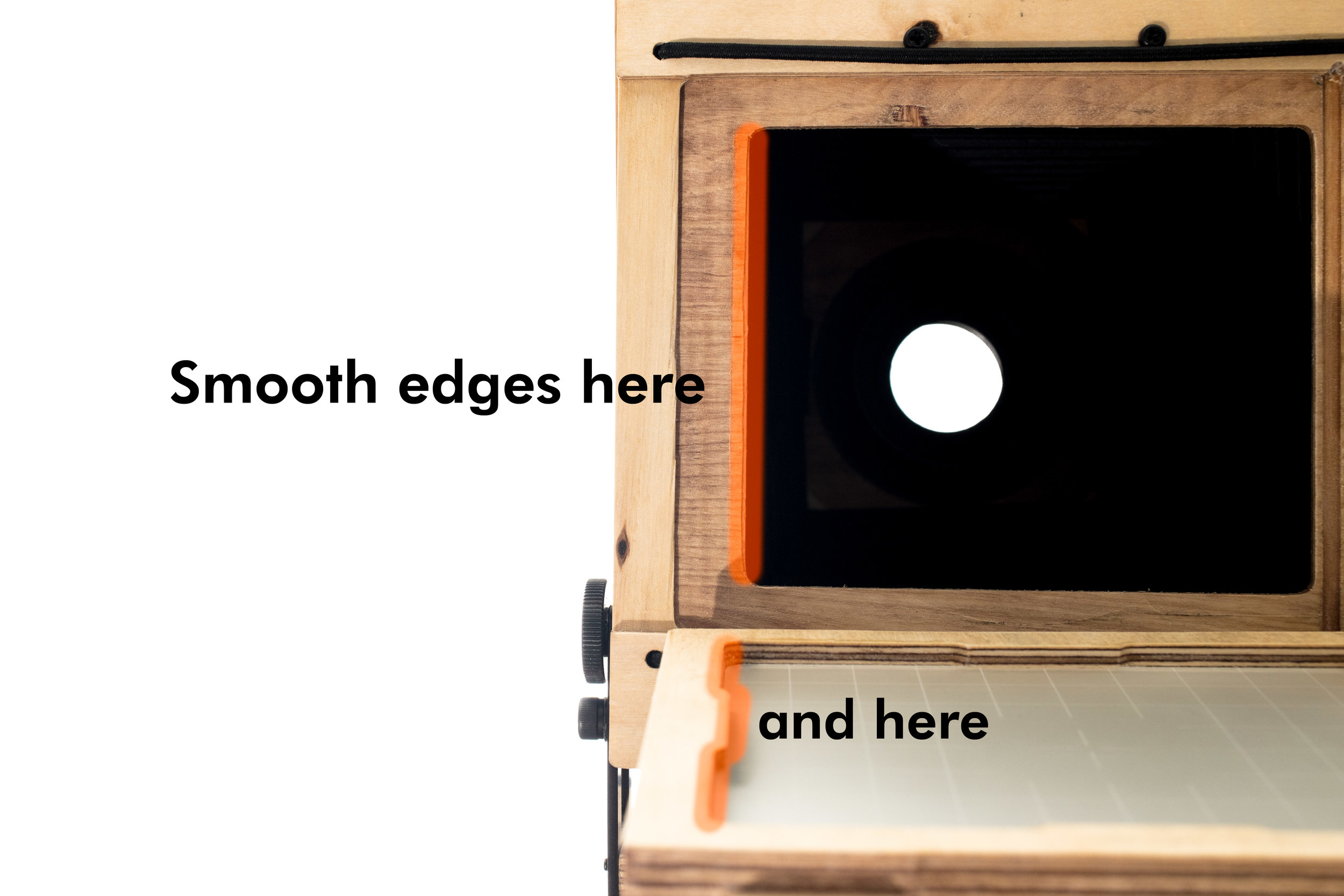Minor mods for the Intrepid 4x5 camera
The Intrepid 4x5 camera is a modern marvel - a large format camera that costs less than some digital point-and-shoots, and weighs less than a Hasselblad 500, or even a digital SLR with a medium-sized lens. This means there is now a truly portable, hand-luggage friendly 4x5 camera. I got mine directly from the Intrepid guys on their website.
From what I've read, the first iteration of the camera had problems with fit and finish. This 2nd version is a definite improvement, but I've found a few issues that affect function. I'm in the US, and the issues aren't so bad I feel the need to return it back to the UK - so I put my woodworking and tinkerer skills to use and fixed the problems. Note: these quick fixes probably void the warranty, so make adjustments at your own risk if you are confident in your own abilities.
Refinements
- My film holders always get stuck when pushing them into the camera. This is because of the sharp edges of the inside of the focus screen housing and the body of the camera. Maybe the wood bowed a little bit on my model. Careful use of sandpaper to soften/chamfer these edges allows the film holders to slide in without sticking. If you are skilled with hand tools, a very sharp chisel is much better to use because it creates shavings rather than dust, which is easier to clean out of the bellows. See where the catch points are in the image below.
- The rotating back catches on the metal hinge for the rear standard. I used a small metal file to take the edge off the protruding hardware.
- The front standard was difficult to lower because of some metal extrusions in the vertical rail. This might be an intentional feature to prevent the standard from dropping unexpectedly, but I filed it off with a metal file. My life is simpler now. Further, I think the detents in the rail are too high to be neutral anyway.
- The focus locking knob moves the focusing mechanism when it is being tightened down. This could be a major flaw, but we can make lemonade from this lemon. I do my main focusing with the locking knob loose, and then i semi-tighten the locking knob and do a final focusing. This gives more resistance allowing finer focusing, and the lock can be left alone once focus is found.
Additions/removals
- I removed the Graflock clips on the rear of the camera. It is a simple case of unscrewing the clips, but I replaced the screws in their holes for neatness. These clips are a great feature that allow the use of many accessories, but until I ever own such an accessory, I prefer to have as few protrusions as possible to prevent snagging when stowing the camera in a bag.
- I added a capture clip quick release plate because I use a Capture Clip as a clamp on my tripod head. The tripod is a 3 Legged Thing, Albert.
- I added a cold shoe for a wireless flash remote. You can trigger the remote from a large format lens' PC port with this adapter. There are more conventional cold shoes (like these) that have space for flash-foot pins, but they are way more bulky. Because of the Intrepid's weight-saving design, there are actually very few places to add a cold shoe, but I found a space underneath the camera at the rear. I drilled a hole though the base plywood slightly smaller than the screws that came with the cold shoe. I used the screw itself to create the thread in the hole and it holds firmly.
- I haven't got around to the last addition yet, but it will have to be a new focus screen. The one I received had tide-marks on it - I presume it is from the grinding process. I thought they were dust marks at first, but they don't wipe off. They are not a big deal when composing but can be a slight distraction. A new screen, perhaps a shade brighter too, is on the shopping list.
This camera is the gateway drug for portable large format photography. It is easy to predict that, because of its price and its wooden frame, it will be the first large format (or any format) mod-camera for the mechanically minded. It should be easy to swap out parts, drill holes, glue on additions and experiment with different components using the stock body as a base.







